
Euproserpinus euterpe, the Kern primrose sphinx moth or euterpe sphinx moth is a small day-flying moth in the family Sphingidae. The 0.04-inch (1.0 mm), light green eggs are laid haphazardly on various plants in the vicinity of the evening primrose host plants. Larvae emerge from the eggs about a week after oviposition and begin to feed on the flowers and young leaves of the evening primrose. Larvae hatching from eggs laid on other plants are able to wander significant distances to find the host plant.

Callionima nomius, the fan-tailed bark moth, is a moth of the family Sphingidae. The species was first described by Francis Walker in 1856.

Pachysphinx occidentalis, the big poplar sphinx, is a moth of the family Sphingidae. The species was first described by Henry Edwards in 1875. It lives throughout Canada and the United States. The habitat consists of riparian areas and suburbs.

Proserpinus clarkiae, or Clark's sphinx, is a moth of the family Sphingidae. The species was first described by Jean Baptiste Boisduval in 1852. It is known from British Columbia and Washington south through California to Baja California, east to Idaho, Wyoming and Utah. The habitat consists of oak woodland and pine-oak woodland in foothills.

Xylophanes eumedon is a moth of the family Sphingidae. It is known from Mexico.

Macroglossum affictitia, the dark-bordered hummingbird hawkmoth, is a moth of the family Sphingidae. It is known from Sri Lanka and southern India to Myanmar, Thailand and south-western Yunnan, China. It was described by Arthur Gardiner Butler in 1875.
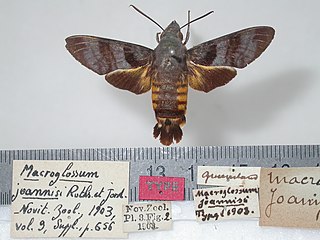
Macroglossum joannisi is a moth of the family Sphingidae. It is known from Queensland.

Temnora wollastoni is a moth of the family Sphingidae. It is found from Liberia, east to the Central African Republic and then south to the Democratic Republic of the Congo, the Republic of the Congo and Gabon.
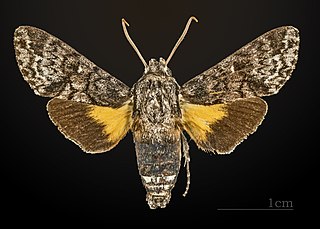
Cautethia yucatana is a species of moth in the family Sphingidae, which is known from California and Mexico south to Central America. It was described by Benjamin Preston Clark in 1919.

Rhagastis lunata, the lunulate mottled hawkmoth, is a moth of the family Sphingidae. It is known from Nepal, north-eastern India, Thailand, south-western China and Vietnam.

Hayesiana triopus, the nonsuch hawkmoth, is a moth of the family Sphingidae. It is known from Nepal, north-eastern India, southern China and Thailand.

Xylophanes media is a moth of the family Sphingidae first described by Walter Rothschild and Karl Jordan in 1903.
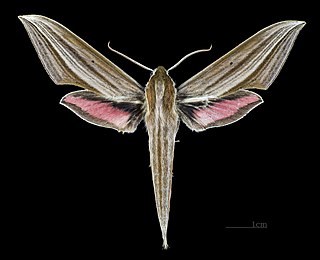
Xylophanes neoptolemus is a moth of the family Sphingidae.

Xylophanes resta is a moth of the family Sphingidae.

Xylophanes thyelia is a moth of the family Sphingidae. The species was first described by Carl Linnaeus in his 1758 10th edition of Systema Naturae.
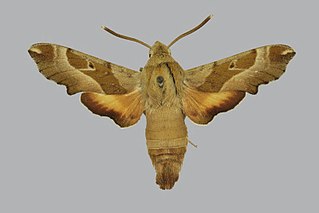
Proserpinus gaurae, the proud sphinx moth, is a moth of the family Sphingidae. The species was first described by James Edward Smith in 1797. It is found from Texas and Louisiana east to northern Florida, north to Alabama, Missouri, northern Georgia and South Carolina. It may range as far south as northern Mexico.

Proserpinus vega, the vega sphinx moth, is a moth of the family Sphingidae. The species was first described by Harrison Gray Dyar Jr. in 1903. It is found from southern Arizona, New Mexico and Texas south into Mexico.

Eupyrrhoglossum venustum is a moth of the family Sphingidae. It is known from tropical and subtropical lowlands in Brazil.

Isognathus australis is a moth of the family Sphingidae.
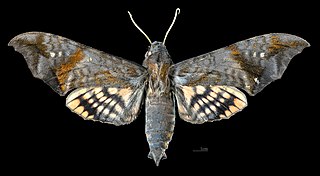
Nyceryx hyposticta is a moth of the family Sphingidae. It is known from Colombia, Venezuela, Ecuador, Peru and Bolivia.





















